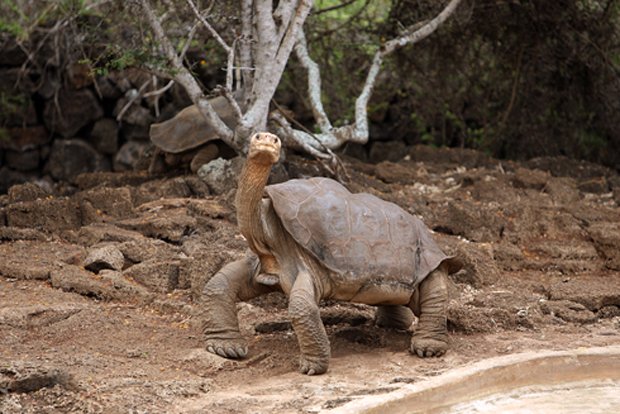Galapagos: ultimate nature adventure, day 4

Day 4. AG editor Ian Connellan tours the Galápagos
Islands, off the coast of South America.
LAUNCH
THE GALLERY
WE DROPPED ANCHOR AT Puerto Ayora on Isla Santa Cruz at about 11.30pm the night before. In the morning the harbour is liberally dotted with cruise vessels and buzzing with activity; there are water taxis darting to and fro, provisions being brought aboard by crew in pangas, several large private vessels and the mainland-to-islands cargo ship.
We head ashore first thing and disembark at the Charles Darwin Research Station wharf, just east of Puerto Ayora. The station was established in the early 1960s as a base for Galápagos scientific research, with one of its principal aims a captive breeding program for the famed giant Galápagos tortoises, the total population of which – over different islands – had fallen to 11 species and about 10,000 individuals.
Before humans reached the Galápagos there were 14 tortoise species (those from the islands of Santa Fé, Fernandina and Floreana are extinct) and perhaps 500,000 individuals (tortoise population estimates pre-human intervention vary from 250,000 to 1 million).
The breeding and reintroduction program has been extremely successful and the total tortoise population is back up to about 35,000. On the island of Española, only 14 individuals remained in the early 1960s and now they’re back up to 2200.
The star of the program is Lonesome George, the last surviving tortoise from Isla Pinta. The station has been trying, unsuccessfully, to get George to mate with females from northern Isabela. When we see him he’s standing tall and craning his neck. “Oh, look at that – beautiful,” says Roberto. “I’ve been here hundreds, probably thousands of times and I’ve never seen this. You must send me photographs.”
In the afternoon we visit a farm that adjoins the Galápagos National Park, and has turned to tourism for income. Tortoises wander out for the park lands and onto the farm, where they’re easily seen by visitors, who can get even closer to the Tortuga life by sliding backwards into the shell of a deceased giant to see how it feels (heavy, mostly).

Expeditioner Jodie Moyle makes like a tortoise
Read more blogs in the Galápagos
series
Find out more about the next Peregrine/AG trip
with Ian Connellan to see Borneo’s orangutans.

